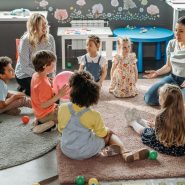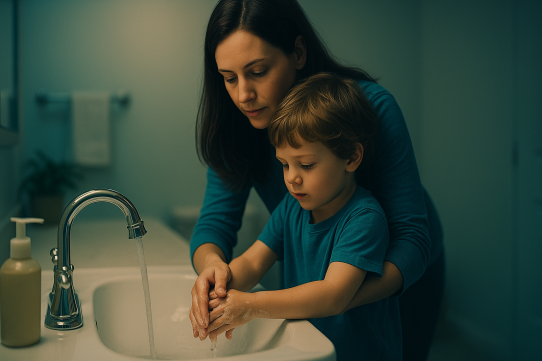An autism-friendly home is more than a physical space — it’s an environment that helps a person feel safe, understood, and supported. For families raising a child on the spectrum, small design changes can make daily life calmer and more predictable.
Whether you live in an apartment, a suburban house, or shared space with relatives, you can build a home that reduces stress and celebrates individuality. The goal is not perfection or expensive renovation, but creating comfort through understanding.
Seeing Your Home Through a Sensory Lens
Every person with autism processes sensory information differently. What feels neutral to one child might be overwhelming to another. The hum of a refrigerator, the flicker of fluorescent lights, or a scratchy fabric can become distractions that make focusing or relaxing difficult.
Start by observing your child’s reactions throughout the day. Do they seek out certain textures or avoid loud rooms? Do they retreat to quiet corners or prefer open space? These preferences hold clues about how to design their environment.
Tip: keep a short journal of sensory triggers and comforts. Over a week, patterns emerge — helping you adjust spaces to reduce discomfort and encourage calm.
Lighting and Sound: Setting the Mood
Light and sound shape how we feel. For autistic children or adults, they can be the difference between peace and overload.
- Natural light: Use soft daylight whenever possible. If your home has harsh overhead bulbs, replace them with warm LEDs.
- Task lighting: Flexible lamps with dimmer switches help control brightness during reading or play.
- Noise management: Soft rugs, curtains, and wall hangings absorb echo. If outside noise is unavoidable, consider noise-canceling headphones or a white noise machine to create consistent background sound.
- Appliance noise: Sometimes it’s as simple as turning off buzzing electronics or moving a fan to another room.
A calm sensory environment starts with these two elements — lighting and sound — which are often the biggest sources of tension at home.
Creating Safe and Predictable Spaces
Predictability helps reduce anxiety. When each room has a clear purpose, transitions feel easier. Try labeling bins, drawers, and shelves with simple words or pictures. Visual organization builds independence and minimizes frustration.
Common autism-friendly zones:
- Calm corner: a small space with soft lighting, a beanbag or weighted blanket, and fidget tools.
- Play zone: an area for exploration that’s safe from fragile objects or sharp edges.
- Homework or focus area: a simple desk space with minimal clutter, visual timer, and routine chart.
Even small apartments can use vertical shelving or room dividers to create defined areas. The goal is clarity — every space signals what it’s for and how to use it.
Bedroom: The Sanctuary of Calm
A restful bedroom can make daily transitions smoother. Many autistic children find bedtime difficult because it signals change. A consistent nighttime setup helps the body and mind wind down.
- Choose neutral or muted colors — blues, greens, or soft earth tones.
- Keep decorations minimal and meaningful. Too many posters or bright patterns can distract rather than comfort.
- Use weighted blankets or compression sheets if your child finds deep pressure soothing.
- Introduce calming scents, such as lavender or chamomile, through diffusers or soft sachets (if tolerated).
- Place a small nightlight with warm color temperature for reassurance without glare.
Bedtime routines anchored by sensory comfort can transform evenings from chaos to calm.
Kitchen and Mealtime Routines
Mealtime can be stressful for children with sensory sensitivities — the mix of smells, textures, and social expectations can overwhelm. A few mindful adjustments make the experience easier for everyone.
- Use plates with dividers to separate foods and textures.
- Allow preferred utensils or silicone grips for comfort.
- Keep ambient noise low — turn off the TV or loud kitchen fans.
- Offer small choices (“Do you want the blue plate or the yellow one?”) to promote autonomy.
- Respect boundaries around taste or texture, but continue gentle exposure without pressure.
Over time, routine builds comfort. A calm table, familiar setup, and predictable sequence of steps (“wash hands, set plate, eat, clean up”) help create a sense of control.
Bathroom and Self-Care Independence
The bathroom can be one of the most challenging spaces because of bright lights, echoes, and water temperature changes. However, it can also be one of the easiest to adapt.
- Soften the space: use towels and mats to reduce echo and provide warmth underfoot.
- Control lighting: switch to soft white bulbs and add dimmers if possible.
- Predictable cues: use step-by-step laminated charts for toothbrushing, handwashing, or bathing.
- Sensory awareness: let your child test water temperature visually or with their hand before stepping in.
Encourage independence gradually — celebrate effort, not speed or perfection.
Clothing, Fabrics, and Textures
Many autistic children have strong preferences about clothing. Tags, seams, or tight collars can cause distress.
Choose soft, breathable fabrics like cotton or bamboo. Remove tags, avoid scratchy materials, and let your child choose what feels best.
Sensory-friendly brands often sell tagless, seamless, or compression-style clothing that provides consistent pressure without discomfort. Comfortable clothes can turn daily routines from battles into confidence-building moments.
Technology and Tools That Support Comfort
A growing number of tech-based products can make daily life easier for families. Many are simple and affordable.
- Visual timers for transitions (affiliate opportunity).
- Smart lighting systems with adjustable brightness and color.
- Tablet-based communication apps to support speech or routines.
- Weighted lap pads for focus during homework.
When integrating technology, keep screen time balanced with active, sensory-rich play. Tools should serve the child, not the other way around.
Organizing with Visual Supports
Visual organization gives predictability to daily life. Simple systems work best — clear bins, picture labels, and color coding for toys or school supplies.
For older children, wall calendars and whiteboards promote independence. Use color-coded schedules (blue for home, green for school, yellow for therapy) to show what’s ahead. Over time, these tools reduce the need for constant verbal reminders, empowering the child to take ownership of their routines.
Designing for the Whole Family
An autism-friendly home benefits everyone. When parents feel less stressed and siblings understand shared routines, the home becomes a more peaceful place.
Invite the whole family to participate in design decisions. Let siblings choose calm activities for shared spaces, or ask your autistic child to help decorate their calm corner. Involving them creates pride and ownership.
When a home reflects everyone’s needs — quiet for some, energy outlets for others — it becomes more inclusive and harmonious.
Evolving with Your Child’s Growth
Children grow, and their needs change. A toddler may love a cozy sensory nook; a teenager may prefer private space to decompress. The best autism-friendly homes evolve with the family.
Revisit each area every few months. Ask questions:
- Does this space still feel calming?
- What’s working — and what’s not?
- Are routines too rigid or too loose?
Adaptation is the secret to long-term success. A supportive environment isn’t static; it grows alongside the person it serves.
The Heart of a Supportive Home
Autism-friendly design isn’t about expensive furniture or perfect organization — it’s about empathy. It’s about paying attention to how your child feels in each corner of the home and shaping the environment to honor that.
When you adjust lighting, sound, and sensory input, you communicate something deeper: You belong here. This space is made for you.
Over time, those small gestures build confidence and connection. Home becomes more than a shelter — it becomes a sanctuary.
Photo by Artem Podrez: https://www.pexels.com/photo/a-boy-reading-a-book-near-a-window-7494578








